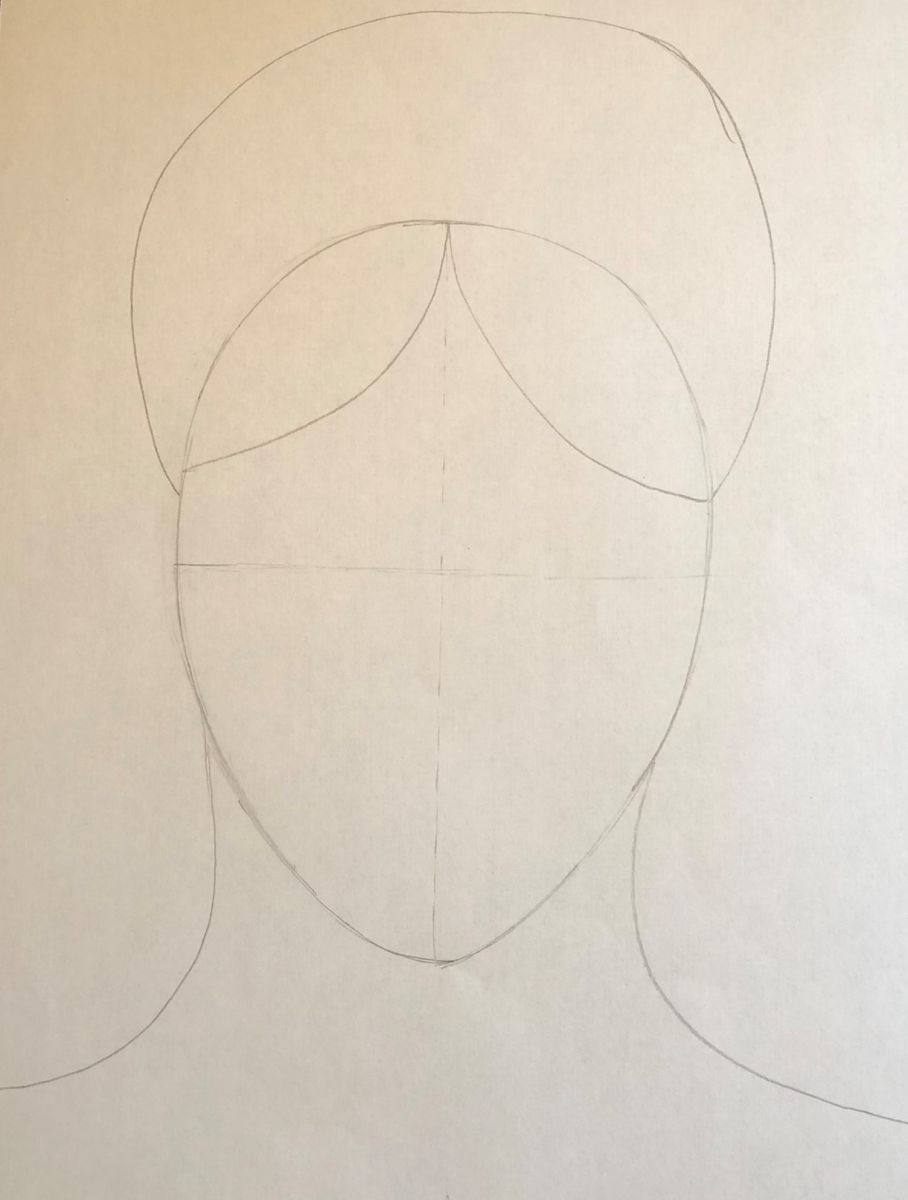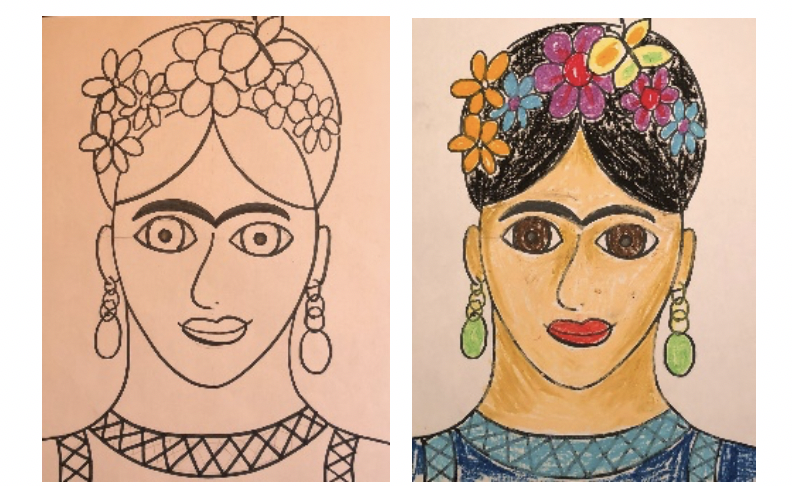Students will observe the art of Mexican artist Frida Kahlo and learn about her legacy then draw her portrait using colorful crayons. Recommended for Kindergarten.
Line: the flat path of a dot through space used by artists to control the viewer’s eye movement; a long narrow mark or stroke made on or in a surface made by a pencil, pen, or brush.
Shape: a two-dimensional (flat) area enclosed by a line.
Space: the area above, below, around and within an artwork.
Balance: the arrangements of elements that makes individual parts of a composition appear equally important. Major types of balance are symmetrical and asymmetrical. This lesson will focus on symmetrical, in which the image or form is equally weighted on both sides of a center line.
Details: Smaller things that inform the viewer about the person depicted in the portrait.
Horizontal Lines: lines that run from side to side on the paper.
Portrait: close up picture of a face and neck.
Vertical Lines: lines that run from the top to the bottom of the paper.
• Glue sticks
Frida Kahlo (1907-1954) was German-Mexican, raised in a small Mexican village, disabled with polio as a child. Her father was a prominent photographer and he taught her how to use the camera. He also encouraged her to paint portraits, fruits and animals. At age 18 she was in a bus accident and lived with painful back problems for the rest of her life. She painted constantly: in bed or in a wheelchair. She painted everything she could: self-portraits, her jewelry and dresses, even her pets (a deer, monkey, birds and a dog). She was inspired by Mexican folk culture and her Catholic beliefs. This helped her cope with having to stay immobile for so long.
At age 21, she married Mexican Diego Rivera, a famous muralist that painted everyday Mexican people on the street. The couple’s art became very popular in Europe and America. She painted for the rest of her short life, despite all her health issues.
Students will:
Spend a few minutes looking at Kahlo’s self-portrait and briefly describe her life. Point out the location and shapes of facial features within the template shape. Talk about colors and how basic shapes ‘balance’ by being in the same places on both sides of an imaginary bisecting vertical line.
Demonstrate each step for your students and have them follow along. The students will be able to decorate Frida’s flower crown, add adornments and color her. Students at this developmental level will draw large shapes more easily. Encourage details and color choices.





Lastly, draw her flower crown and signature adornments: flowers, leaves, birds, a necklace, and a pair of earrings.
a. Flowers can be drawn using circles and ovals for leaves.

Lesson written by Amaranta Sandys. Books available at the library: Frida by Jonah Winter;Viva Frida, by Yuyi Morales; Who was Frida? by Sarah Fabiny.
21st Century Thinking Skills
Observing, making connections, visualizing, sequencing, comparing/contrasting, finding evidence, problem solving, determining point of view, decision making, evaluating.
WA State Learning Standards
VA:Cr1.2.K a. Engage collaboratively in creative art-making in response to an artistic problem.
VA:Cr2.2.K a. Identify safe and non-toxic art materials, tools, and equipment.
VA:Cr2.3.K a. Create art that represents natural and constructed environments.
VA:Cr3.1.K a. Explain the process of making art while creating. This happens if you use vocabulary.
VA:Re7.1.K a. Identify uses of art within one’s personal environment.
VA:Re7.2.K a. Describe what an image represents.
VA:Re8.1.K a. Interpret art by identifying subject matter and describing relevant details.
VA:Cn11.1.K a. Identify a purpose of an artwork. This happens when you explain the content of the portrait.
Arts Integration Opportunities
Music: Incorporate Mexican music during the lesson.
Dress up play: Colorful clothing, fabrics, flower crowns.
Movement: bring in a wheelchair for students to engage with in a meaningful way.
Please note: These lesson plans are intended for non-profit use only. Use of these plans for commercial purposes should give attribution to the Issaquah Schools Foundation and be accompanied by a nominal donation at www.isfdn.org/donate. Thank you.
Fueling Success for Every Student, Every School